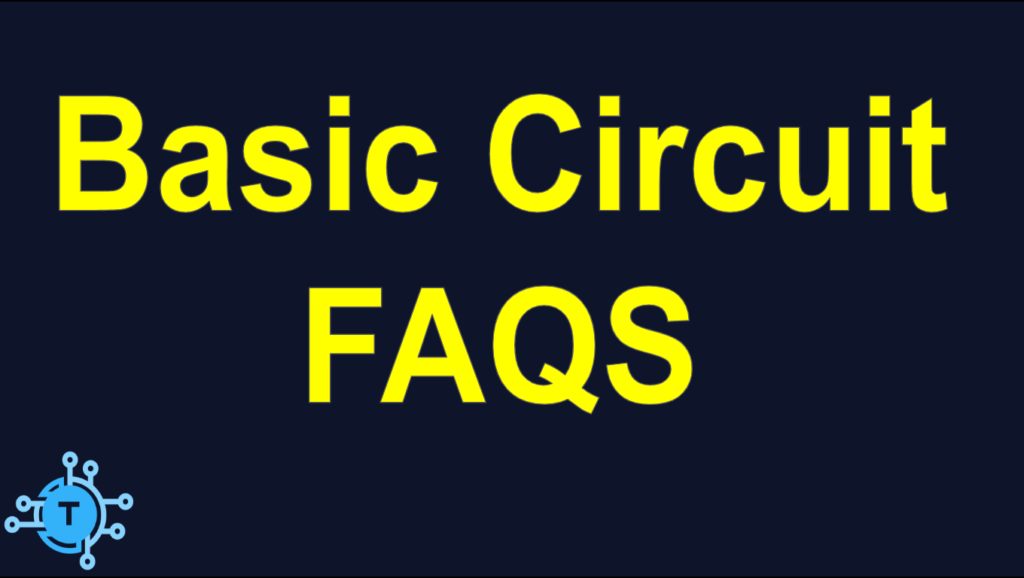
Below is another list in a series of Frequently Asked Questions (FAQS) about electricity and electronics that are oriented toward Appliance Technicians and HVAC Technicians.
Frequently asked questions about Basic Circuits.
Q. What is an electric circuit?
A. It is a continuous loop of conductive material that allows current to flow from one side of a voltage source to the other.
Q. What are the components of an electrical circuit?
A. At minimum, an electric circuit contains a voltage source (which supplies energy to the circuit), a conductive path, and a load (which releases the energy).
Q. What are the five basic types of electric circuits?
A. The closed circuit, open circuit, short circuit, series circuit, and parallel circuit.
Q. What is a closed circuit?
A. A unbroken loop of conductive material that allows current to flow all the way through the circuit.
Q. What is an open circuit?
A. It is an otherwise closed circuit, with a broken conductive path. This “break”, could be a switch or simply a disconnection in the conductive loop.
Q. What is a short circuit?
A. It is a closed circuit where a conductive path has been inserted in parallel with the load. This conductive path is a shorter path for the current, hence the term “short”.
Q. What is a series circuit?
A. A circuit that has two or more loads (such as resistors), end to end, where the current is the same throughout the entire circuit, yet the source voltage splits up among the series loads in a way that depends on the resistance values. The sum of the voltage across each load equals the source voltage.
Q. What is a parallel circuit?
A. A circuit with two or more loads connected in parallel that each have the source voltage across them, and where the total circuit current branches out among the loads in a way that depends on their respective resistances. Such branched current recombines at the other side of the parallel loads, and returns to the other end of the voltage source.
Q. What is the equivalent resistance in a series circuit?
A. It is the sum of all resistances.
Q. What is the equivalent resistance in a parallel circuit?
A. It is always less than the lowest value resistor. For two resistors, you can use the product over the sum rule, or Re=(R1 x R2)/(R1+R2). For three or more resistors, use the reciprocal rule or 1/Re = 1/R1 + 1/R2 + 1/R3, etc.
To donate to the Tech Circuit – CLICK HERE
For additional electrical and electronics learning material for field techs, visit our homepage at http://www.TechCircuit.org or our Facebook group at https://www.facebook.com/groups/746823709133603.
TC
We are a participant in the Amazon Services LLC Associates Program, an affiliate advertising program designed to provide a means for us to earn fees by linking to Amazon.com and affiliated sites.
